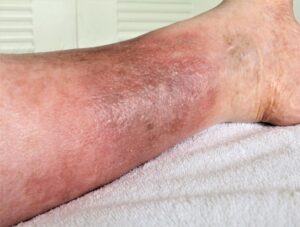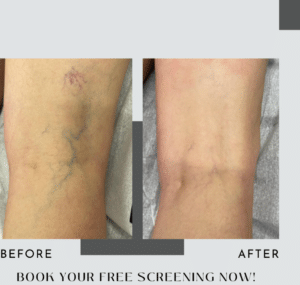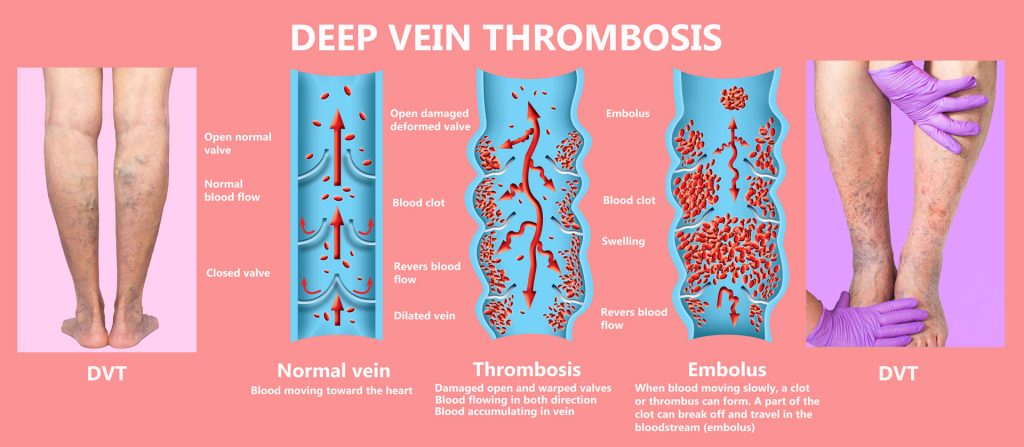By Salcedo Medical Center and Vein Institute | Posted on April 2, 2024.
Deep vein thrombosis (DVT) occurs when a blood clot forms in one of the deep veins in your body, typically in your legs.
The good news is that when DVT is identified as soon as possible, it can be treated effectively and stabilized. In order to prevent deep vein thrombosis, the team at Salcedo Medical Center and Vein Institute wants you to be aware of the primary warning symptoms of deep vein thrombosis.
Here are some common warning signs and symptoms of deep vein thrombosis:
1. Swelling: DVT often causes swelling in the affected leg, particularly in the calf, ankle, or foot. The swelling may be accompanied by pain or tenderness.
2. Pain: DVT can cause pain, which may feel like a cramp or a soreness in the affected leg. The pain might worsen when standing or walking and may improve when resting or elevating the leg.
3. Warmth and redness: The skin over the affected area may become warm to the touch and appear red or discolored.

4. Visible veins: Sometimes, the veins in the affected leg may become more visible or prominent.
5. Leg fatigue or heaviness: You may experience a sense of tiredness or heaviness in the leg affected by the blood clot.
6. Dilated superficial veins: In some cases, superficial veins near the skin’s surface may become dilated or more noticeable.
7. Increased warmth in the affected leg: The affected leg may feel warmer compared to the unaffected leg.

Deep vein thrombosis (DVT) is a dangerous and potentially fatal disorder. How severe? According to statistics, 10–30% of patients die within a month after their diagnosis.
Symptoms May Vary from Person to Person
It’s important to note that these symptoms can vary from person to person, and some individuals may not experience any noticeable signs. Additionally, these symptoms can also be associated with other conditions, so it’s crucial to consult a vein disease specialist for an accurate diagnosis.
Remember, if you suspect you may have deep vein thrombosis, it’s essential to seek immediate medical attention, as DVT can potentially lead to serious complications if left untreated, such as pulmonary embolism (a clot that travels to the lungs).
Contact Dr. Hector L. Salcedo and his medical team for an accurate diagnosis.

Are You Experiencing Signs of DVT? We can help!



